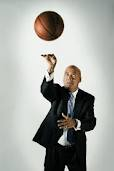 Former AOL Sports head Jimmy Lynn said “sports always drives adoption of new technologies,” and “we’re in the fifth inning” in determining winners and losers in the sports social space.
Former AOL Sports head Jimmy Lynn said “sports always drives adoption of new technologies,” and “we’re in the fifth inning” in determining winners and losers in the sports social space.
Lynn, who made his comments at TEDx PennQuarter on Oct. 24, is managing partner of the global strategic advisory firm JLynn Associates and on the faculty of Georgetown University’s sports industry management program.
From 1995 to 2009, he was a driver in creating AOL Sports as a major online destination, and central in AOL’s overall success.
Lynn said sports social media content developers must focus on mobile devices. In such countries as China, Brazil and India, there are huge sports audiences, and those people already get their content on mobile devices, he said. Reliance on the mobile device for sports information is bound to occur among fans in the United States, he said.
“I tell my students: go global, mobile and green,” Lynn said.
The Twitter Opportunity
Lynn said Twitter is already ingrained in the sports fan experience, and it has paved the way for professional athletes to — for the first time — begin making money through digital sports information.
“We’ve been trying to figure out how to monetize athletes on the Internet since 1995,” Lynn said. “And, we could not figure it out. Twitter is one of the first ways. Athletes can tweet they are wearing a product, and that (tweet) moves people (to purchase the product). All of sudden (the athletes) are getting paid five grand, seven grand, 10 grand.”
Facebook Promising, But Untapped
Facebook is also a complete game changer, Lynn said. It is one thing to have a healthy presence on Facebook, and quite another to turn that audience into paying customers, he cautioned.
“To me the Holy Grail in social media is how to take this huge social media audience and drive e-commerce,” Lynn said. “That’s the end game.”
Sports Blogging Sites Promising
Make no mistake, big media is in a run for its money in the brave new world of sports social media, Lynn said. He identified the rise of such sites as SBNation and bleacher report into the top 10 most-trafficked online sports destinations as indication that speaking out on sports is every bit as compelling as reading about sports.
“These guys are competing with ESPN, Yahoo, CBS and Fox,” Lynn said. “And they are right there in the top 10. Why? People like to get their opinion out there. Just like sports radio was the big thing in the 1980s, now, people are blogging, blogging and blogging.”
Lynn said SBNation and bleacher report hold an advantage of the media mainstream. That is, they provide an outlet for people to talk about community sports, including high-school sports. They also facilitate the production of sports video by amateurs, and give amateurs the opportunity to try their hand as sportscasters. That kind of sports social media would get lost on outlets that focus on college and professional sports, and it is a huge opportunity for SBNation and bleacher report and others going forward, Lynn said.
Sports drives consumer demand for technology
“Sports always drives adoption of new technologies,” Lynn said.
In making this case, Lynn took a historical perspective. He pointed up that horse racing, baseball and boxing were key to getting consumers to purchase radios in the 1930s, and that baseball and football drove television purchases in the 1950s, and color television set purchases in the 1960s. In the 1990s, satellite television allowed displaced fans to tune into teams they loved buy couldn’t see because they did not live in local markets, he added. And sports drove the digital revolution beginning in 1995 by providing sports scores and fantasy sports statistics. Today, sports will drive consumers to purchase mobile phones and tablets in ever-increasing numbers, he said.
Lynn on center stage
Lynn’s comments signal that sports social media thought leaders are focusing almost exclusively on the impact of mobile devices when evaluating new sports business opportunities. His appearance at the nonprofit TED means the thought-leadership clearinghouse has begun to see sports social media as a major cultural phenomenon.
As mobile devices win the day among consumers, competitors in the sports social media space must continue to provide the basics, Lynn said.
“Scores drive a sports site,” Lynn said. “It was (true) then and it is now.”






